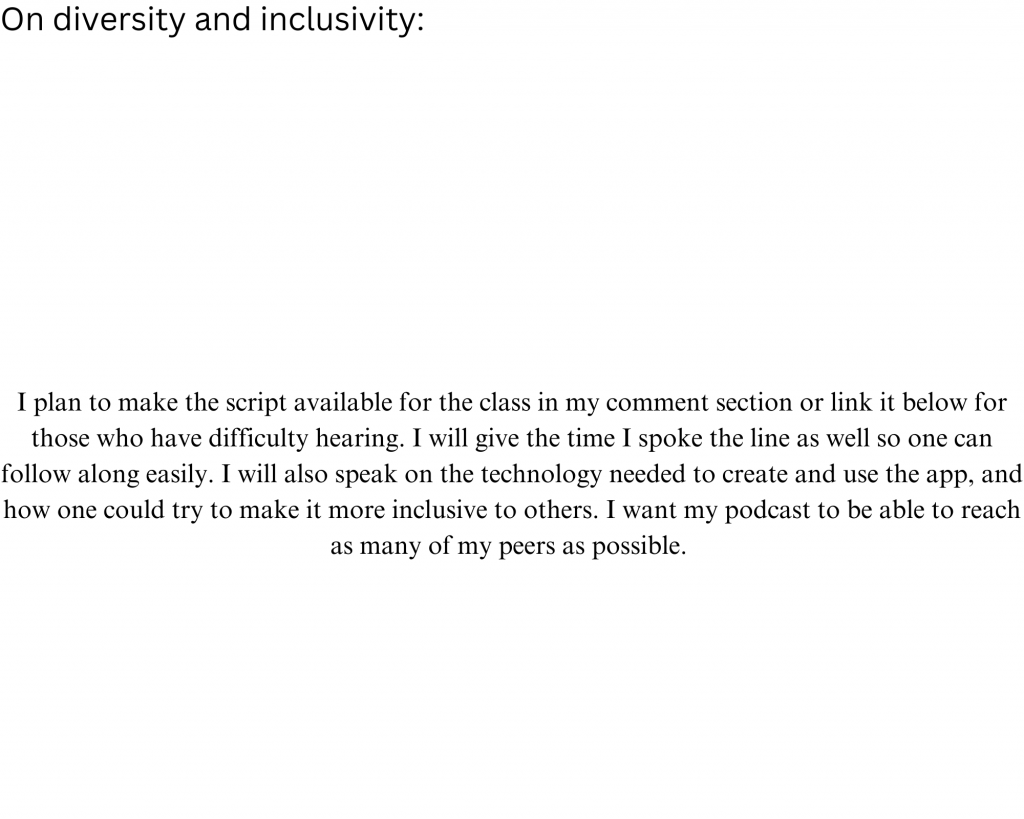
Final Project Storyboard- Mara Radovic




For this project I am going to focus on including a diverse amount of people in the images I use for each infographic. For some of the infographics like the one on facial recognition’s bias I will naturally need to incorporate images of people of different races and genders, since the subject pertains to how the software interacts with different races and genders. However, even in my infographics not directly related to issues of race or gender I will still make sure that the pictures of people I choose to incorporate represent different cultures or backgrounds. Since my audience is internet users in general, an audience comprised of many diverse groups of people, I want to make sure that a variety of people are visually portrayed in my infographics. I also want to focus on each infographic’s functionality and understandability. When incorporating text explanations, I will make sure that the font is large enough to be read by general audiences, even on smaller devices. The language in each infographic’s text will be sound, both free of stereotypes and assumptions but also breaking down the complex subject matter about digital media to a level that viewers just getting acquainted to each topic will be able to understand. As is part of the goal of my project, each of my infographics will go beyond the white, middle class American’s experience of the internet to examine the problems people of other cultures, races and genders face when interacting with digital media and technology. In some instances, multiple perspectives will be explored at one infographic, like in the one about media creators. Beyond challenging common misconceptions about digital media, my other primary goal of this project is to create visually appealing and interesting graphics. I want the images at the center of each infographic to highlight and even aid in explaining the points I am conveying by giving users a visualization of each topic. Multiple images will be included to display the different points conveyed in each separate block of text. Overall, the images and designs will help my audience to connect the lessons of each infographic back to their own experiences on the internet.

Statement of Ethical and Inclusive Design
Thinking first about the digital ethics of my project, since my project will contain AI generated images, it is important to think about the ethics of AI and art generation. Since I will be using photos from the internet, even though I will be extending them I will be giving credit to the original artist at all times. Next, considering inclusive design, part of my research is on the availability of images allowing for this new creative avenue, so I want to stress that my final project (the completed storyboard) will be accessible as part of my final IS as well as reproducible using different digital images. I wanted to open up possibilities for people to be creative in this manner and use the frameworks of my animation process to continue to create, representing themselves as they see fit. To do this, I want to make my final project readable and with concise goals (to-do lists) at each step, as well as an easy-to-follow flow chart. I did consider that there will have to be some technical language there for my understanding that would not be known by everyone. I want to include this technical knowledge but in comments to myself, so that they can be viewed when needed and the framework will remain untouched. I also considered how others can follow these steps and use AI generated images but not cite them correctly. Because of this, I want to include some sort of protection for the original creators of these images. I haven’t thought of a way to do this yet (it is hard to tell when it is AI or not, from the Practical AI videos), but I’m thinking of including a space for the citation which would also help me keep track of the work and those who use the outline.

